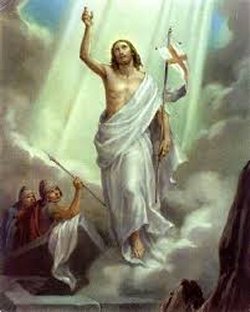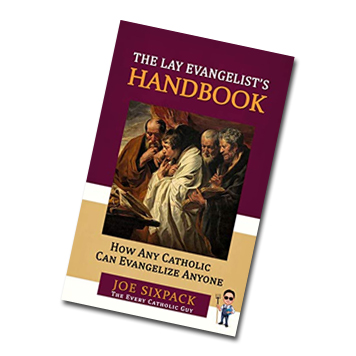In Defense Of An Ancient And Universal Tradition Of The Church
By JAMES MONTI
On Sunday, June 3, here in the U.S., we will be observing the Solemnity of Corpus Christi. In other places this same feast will be celebrated on the preceding Thursday, the day of the week originally chosen by Pope Urban IV (+1265) for this commemoration of the Holy Eucharist in accord with the ancient tradition that this sacrament was instituted by Christ on a Thursday — Holy Thursday.
It may come as a surprise to many that for over six decades the Thursday date of the Last Supper, the scripturally rooted tradition that the Last Supper took place on the eve of our Lord’s death on the cross, has been challenged. Ironically this particular theory has been promoted by well-intentioned advocates of Sacred Scripture’s inerrancy as a way of defending that inerrancy by purporting to solve the seeming discrepancy between what St. John says about the Last Supper and what the “Synoptic Gospels” say (those of Saints Matthew, Mark, and Luke) as to whether this event took place on or before the Jewish Passover
First proposed by the Scripture scholar Annie Jaubert (1912-1980) in the 1950s, this theory asserts that Christ celebrated the Last Supper at a Passover Seder according to a solar calendar used mostly by a Jewish sect known as the Essenes, and that this would have meant celebrating the Last Supper not on Holy Thursday, but rather on the Tuesday before Good Friday.
Jaubert then offers as confirming evidence for this an early third-century Syrian document called the Didascalia Apostolorum, which presents the apostles as affirming that the Last Supper took place on Tuesday. Adding to this a few other sources that also speak of a Tuesday date for the Last Supper, Jaubert argues further that this Tuesday scenario serves to spread out the events that followed the Last Supper over a three-day period, thereby eliminating what she deems a very improbable chronology of the entire Passion taking place within less than a day as indicated by the Gospels.
As this particular debate has serious implications for the liturgical life of the Church, and her understanding of the life of our Lord, I believe it is requisite to defend as best I can the Church’s ancient and universal tradition in this regard.
Let me begin by explaining just how universal from an early date the Thursday tradition for the Last Supper is in the liturgical texts of the East and West alike. These include fourth-century Jerusalem (Diary of Egeria), fourth-century Antioch (Apostolic Constitutions), fifth to seventh century Spain (Liber Ordinum), early sixth-century Italy (Regula Magistri), seventh-century Rome (Roman Ordo in Coena Domini), and seventh-century Constantinople (Lectionary of the Patriarch of Constantinople). These sources are among the most ancient of their kind for their respective locales.
Moreover, the second-century Church Father St. Justin Martyr (+c. 165) expressly describes the Agony in the Garden, the event that immediately follows the Last Supper, as happening “on the day He was to be crucified,” that is, less than twenty-four hours before His crucifixion and therefore on Holy Thursday night (Dialogue With Trypho, chapter 99, Patrologia Graeca, volume 6, column 707).
Particularly important in this regard is the liturgical evidence from Jerusalem, the very place where the original events of the Passion unfolded and where traditions regarding the original holy places from the life of our Lord were carefully handed down. The diary of the Spanish pilgrim Egeria (c. 380) describes in considerable detail how thousands in Jerusalem spent most of Holy Thursday night praying on the Mount of Olives in commemoration of the Last Supper, the Agony in the Garden, and the arrest of Christ (Diary, chapters 35-36).
The Roman Canon, which we know from a citation of it in the writings of St. Ambrose (+397) is at least as old as the fourth century, begins the consecration rite with a declaration that the institution of the Holy Eucharist took place “on the day before that He suffered” (“Qui pridie quam pateretur”). The Latin verb “patior,” “to suffer,” in this context usually includes not only the suffering of Christ but also His death. St. Ambrose uses “patior” in precisely this sense when he speaks of the Paschal Triduum: “Christus passus est, et quievit et resurrexit” (“Christ suffered, and rested, and resurrected” — Epistle 23, nn. 12-13, Patrologia Latina, volume 16, column 1030).
This would indicate that in the West a Thursday date for the Last Supper was already recognized by the fourth century.
If there was any “memory” of the Last Supper as a Tuesday event, why is it that we find no trace of this “memory” in any of the liturgies of Western or Eastern Christendom? Everywhere — including the Coptic, Ethiopian, and the West Syrian and East Syrian Rites — the Holy Week commemoration of the washing of the feet at the Last Supper takes place on Holy Thursday.
In his 1929 Oxford critical edition of the Didascalia, R. Hugh Connolly takes it as a given that its claim to be a work of apostolic authorship composed immediately after the Council of Jerusalem in Acts 15 is not to be taken seriously (Didascalia Apostolorum: The Syriac Version translated and accompanied by the Verona Latin Fragments, Oxford, Clarendon Press, 1929/1969, introduction, p. xxvi). He describes the passages regarding a Tuesday Last Supper (chapter 21) as the anonymous author’s rationale for extending the pre-Easter fast from Monday to Saturday, observing, “To this end he adopts, and probably invents, a strange chronology of Holy Week for which there is no shadow of authority in the Gospels” (introduction, p. xxxii).
The Didascalia account of the Passion also directly contradicts the Gospels by asserting that it was Herod rather than Pilate who condemned Christ to be crucified (chapter 21, p. 190). Connolly notes that in a composition such as the Didascalia the reader should be “prepared for a certain amount of make-believe” from “an author who can invent for his own purposes an entirely baseless chronology of the events of Holy Week” (introduction, lxxvii).
Especially questionable is the reason that the Didascalia gives for a Tuesday Passover and Last Supper — that the Jewish authorities ordered a last-minute commutation of the feast from its Mosaic-prescribed day to Tuesday in order to arrest Christ before thousands of potentially contentious pilgrims arrived for the feast. Even Annie Jaubert admits that this is nothing more than a fictional invention of the author.
Pope Benedict XVI’s seeming endorsement of the Jaubert theory in a 2007 Holy Thursday homily (April 5, 2007) has been cited in its favor, but what is overlooked is the Pontiff’s subsequent robust criticism of the theory in the 2011 Holy Week volume of his biblical commentary, Jesus of Nazareth.
Pope Benedict begins, as we have done here, by citing “the long tradition . . . clearly established as early as the second century” of marking Thursday as the day of the Last Supper, dismissing Jaubert’s citation of the Didascalia and the very small number of other sources that place this event on a Tuesday as “too weak to be convincing.” He adds that it is unlikely our Lord would have followed the Essene calendar, for it is clear from the Gospels that He attended the great Jewish feasts according to when they were celebrated at the Temple, and thus according to the mainstream Jewish calendar.
Noting that Jaubert’s theory is “rejected by the majority of exegetes,” he concludes that it “cannot simply be accepted at face value, in view of the various problems that remain unresolved” (Jesus of Nazareth: Holy Week: From the Entrance Into Jerusalem to the Resurrection, San Francisco, Ignatius Press, 2011, pp. 111-112).
It should also be noted that even in his earlier more favorable comments upon the Jaubert theory in 2007 Pope Benedict stopped short of concluding as Jaubert does that the date of the Last Supper should be rolled back to Tuesday — he simply says that if Christ celebrated the Last Supper according to the Essene calendar this would accommodate a date “at least one day earlier” than Good Friday (and thus Holy Thursday would still be a plausible date for the Last Supper) (Homily, Mass of the Lord’s Supper, Holy Thursday, April 5, 2007 — Vatican website translation — ©Libreria Editrice Vaticana).
St. Peter’s Denials
In his 2015 work Jesus and the Last Supper, the Scripture scholar Brant Pitre raises similar objections to those raised by Pope Benedict in 2011. Pitre points out that time and again in His public ministry Christ clearly observed the Jewish feasts on the same days as most other Jews, and was therefore following the lunar calendar and not the solar calendar of the Essene sect. Why then would He have switched to Essene observance for Passover?
Pitre adds that too little is known about how the Essenes calibrated their calendar for keeping it in sync with the seasons to be able to say whether their Passover was even within the same week as the mainstream Jewish Passover — and there is actually reason to believe that it almost never preceded the latter, which would rule out the Tuesday before Good Friday as a plausible Essene Passover date.
As for stretching out the events from the arrest in Gethsemane to the crucifixion over a three-day span, Pitre observes, “…the chronological evidence for a single evening makes it impossible to gratuitously insert some three days between the night of Jesus’ betrayal and the morning of his crucifixion” (Jesus and the Last Supper, Grand Rapids, Mich., and Cambridge, UK, William B Eerdmans Publishing Co., 2015, p. 273).
Pitre stresses that all four Gospels explicitly present the events of the Passion as transpiring within less than a day, as evinced by the references to St. Peter’s denials, which make this chronology inescapable. Even the Old Testament prophecies suggest that the Passion was to be a sudden, rapid-fire agony, with comparisons to the attack of a lion upon its prey: “…the enemy has pursued me; he has crushed my life to the ground…” (Psalm 143:3); “…save me from all my pursuers, and deliver me, lest like a lion they rend me, dragging me away, with none to rescue” (Psalm 7:2); “Save me from the mouth of the lion” (Psalm 22:21).
In short, the Tuesday Last Supper scenario raises more concerns than it aspires to resolve. The Church’s ancient and scripturally anchored tradition of an Easter Triduum that begins with the Last Supper on Holy Thursday needs to be upheld — because it is true to the Gospels.











